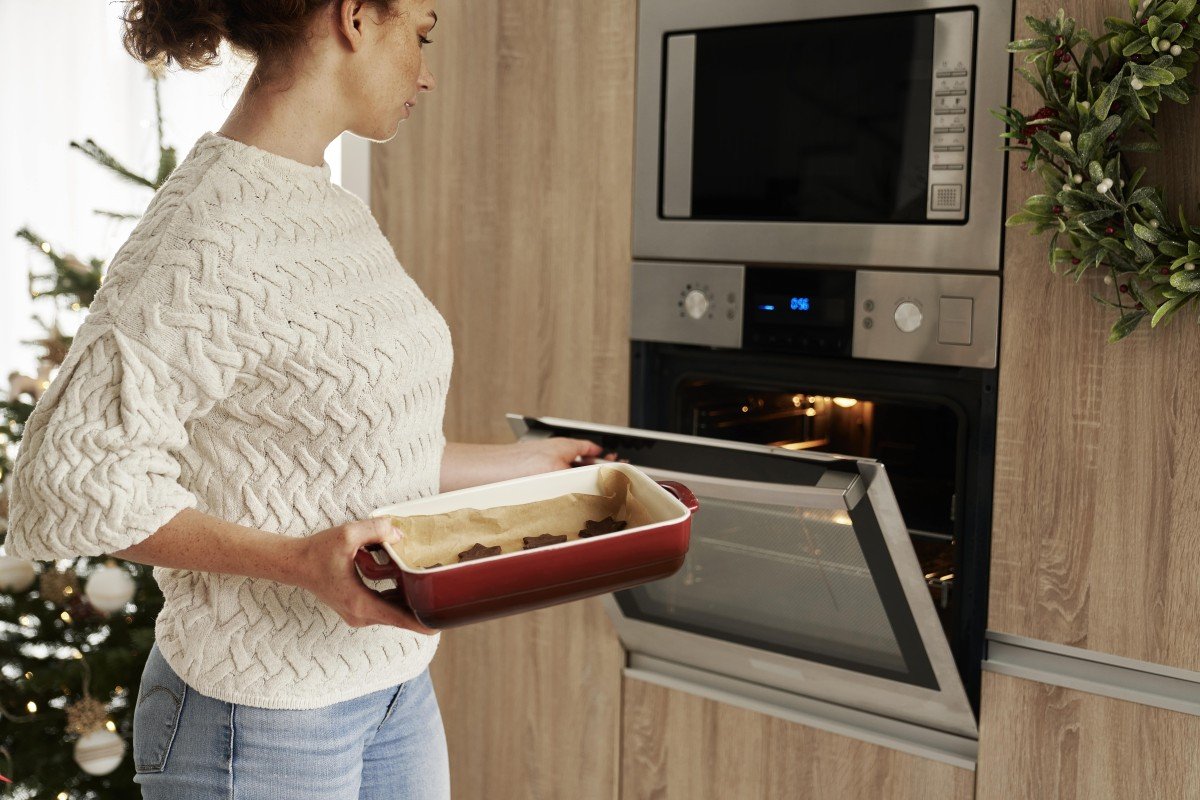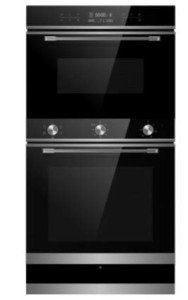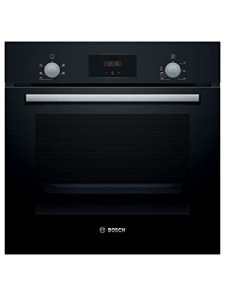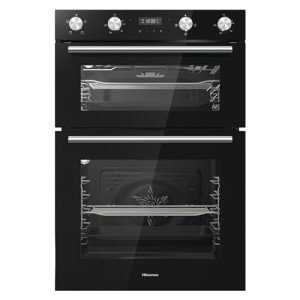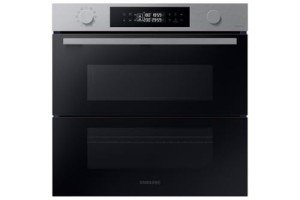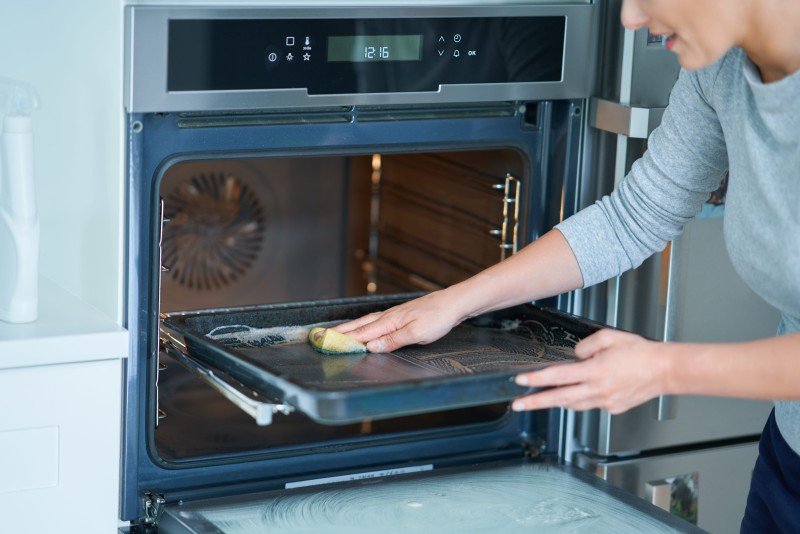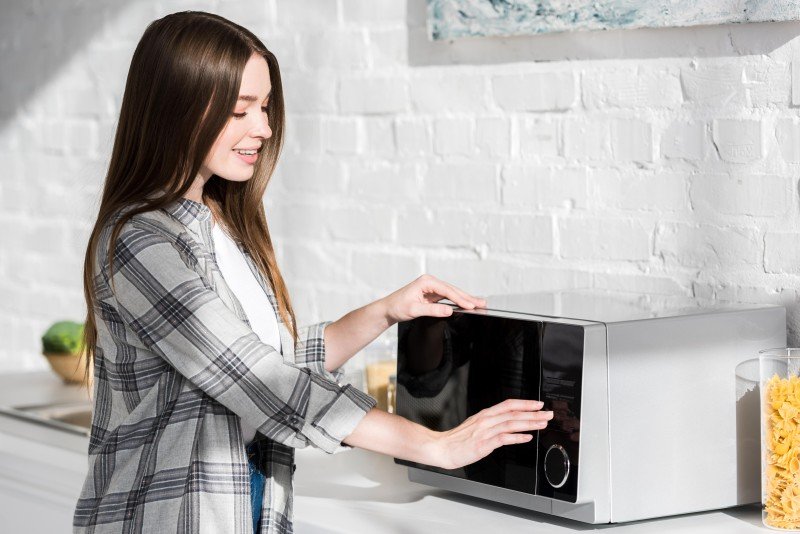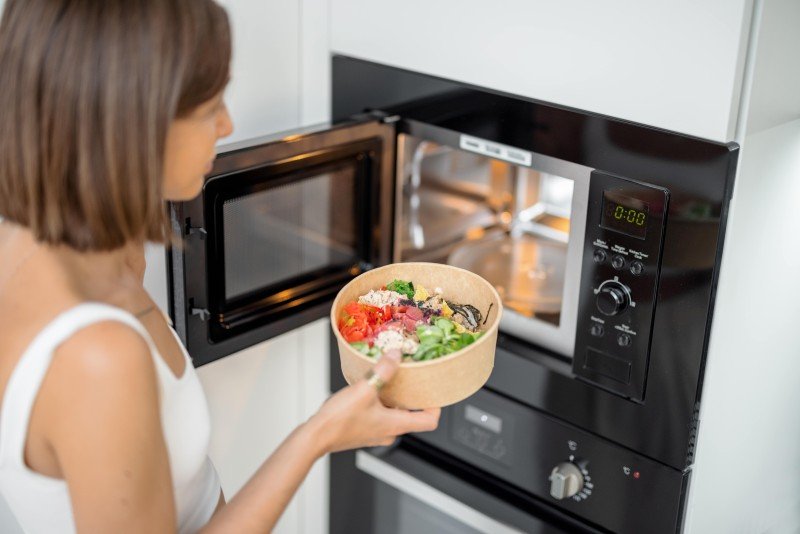For those looking to elevate their kitchen experience, built-in integrated ovens are a popular choice. These sleek and modern appliances offer a seamless look in any kitchen space. In this comprehensive guide, we will delve into everything you need to know about built-in integrated ovens, from their advantages and types to installation and maintenance tips. So, let's dive in and discover the wonders of built-in integrated ovens!
What are Built-in Integrated Ovens?
Built-in integrated ovens are designed to fit seamlessly into your kitchen cabinetry, giving a streamlined and sophisticated appearance. These ovens are installed at eye level or below the counter, providing easy access for cooking and baking needs. They come in various sizes and configurations to suit different kitchen layouts and cooking preferences. Some built-in integrated ovens feature advanced technologies such as convection cooking, steam cooking, and self-cleaning functions. With a wide range of cooking modes and temperature settings, these ovens offer versatility and precision in preparing a variety of dishes. Built-in integrated ovens can be powered by electricity or gas, with electric ovens being the most common choice due to their even heat distribution and precise temperature control. Gas ovens, on the other hand, are preferred by professional chefs for their quick heating capabilities. Built-in integrated ovens often have sophisticated control panels with digital displays, touchpad controls, and programmable settings. They may also include additional features such as temperature probes, delay start functions, and Sabbath mode for religious observances.
Advantages of Using Built-in Integrated Ovens
There are several advantages to investing in a built-in integrated oven for your kitchen:
- Seamless Integration: One of the primary benefits of built-in integrated ovens is their seamless integration into your kitchen cabinetry. They blend in with the surrounding design, creating a cohesive and polished look.
- Space-saving: Built-in integrated ovens help maximize space in your kitchen by eliminating the need for a standalone oven unit. This is especially beneficial for smaller kitchen layouts where space is limited.
- Ergonomic Design: These ovens are usually installed at eye level, making it easier to access the oven without bending or stooping. This ergonomic design reduces strain on your back and knees while cooking.
- Energy Efficiency: Built-in integrated ovens are designed to be energy-efficient, helping you save on your electricity or gas bills in the long run. They are well-insulated and retain heat effectively during the cooking process.
- Versatile Cooking Options: With a variety of cooking modes and settings, built-in integrated ovens offer versatility in preparing different types of dishes. From baking to roasting to broiling, these ovens can handle a wide range of cooking tasks.
- Modern Features: Many built-in integrated ovens come equipped with modern features such as convection cooking, pyrolytic self-cleaning, and Wi-Fi connectivity. These features enhance your cooking experience and make meal preparation more convenient.
Types of Built-in Integrated Ovens
When it comes to built-in integrated ovens, there are several types to choose from, each catering to different cooking preferences and needs:
- Single Ovens: Single built-in integrated ovens are compact and perfect for small kitchens or households with minimal cooking needs. They typically have a single cooking compartment and are available in various sizes to fit different cabinet spaces.
- Double Ovens: Double built-in integrated ovens feature two cooking compartments, allowing you to cook multiple dishes simultaneously at different temperatures. This is ideal for those who frequently entertain guests or have large families.
- Combination Ovens: Combination built-in integrated ovens combine the functionalities of a traditional oven with a microwave or steam oven. These versatile appliances offer a range of cooking options, from baking and grilling to defrosting and reheating.
- Steam Ovens: Steam built-in integrated ovens utilize the power of steam to cook food, preserving nutrients and enhancing flavors. They are perfect for healthy cooking and can be used for steaming vegetables, fish, and poultry.
- Pyrolytic Ovens: Pyrolytic built-in integrated ovens feature a self-cleaning function that uses high temperatures to incinerate food residue and grease. Once the cleaning cycle is complete, all that's left is a fine ash that can be easily wiped away.
- Convection Ovens: Convection built-in integrated ovens use a fan to circulate hot air evenly throughout the cooking compartment, resulting in faster and more uniform cooking. They are excellent for baking and roasting dishes that require even browning.
Factors to Consider When Choosing a Built-in Integrated Oven
When selecting a built-in integrated oven for your kitchen, there are several key factors to take into consideration:
- Size: Measure the available space in your kitchen cabinet to ensure the oven will fit properly. Consider the internal capacity of the oven as well, depending on your cooking needs.
- Fuel Type: Decide whether you prefer an electric or gas oven based on your cooking habits and preferences. Electric ovens are known for their precise temperature control, while gas ovens heat up quickly.
- Cooking Functions: Consider the cooking modes and settings offered by the oven, such as convection cooking, steam cooking, and self-cleaning functions. Choose an oven with features that align with your cooking style.
- Energy Efficiency: Look for built-in integrated ovens with high energy efficiency ratings to save on electricity or gas costs. Insulated ovens with good heat retention will help minimize energy consumption.
- Ease of Use: Check the oven's control panel and interface to ensure it is user-friendly and intuitive. Features like touchscreen displays, programmable settings, and temperature probes can enhance the cooking experience.
- Cleaning and Maintenance: Opt for a self-cleaning oven with pyrolytic or steam cleaning functions to simplify maintenance. Removable racks and interior surfaces that are easy to clean will also save you time and effort.
- Brand and Warranty: Choose a reputable oven brand with a good track record for quality and reliability. Look for warranties that cover parts and labor to protect your investment in case of any issues.
Installation Process for Built-in Integrated Ovens
Installing a built-in integrated oven requires some careful planning and expertise to ensure a safe and seamless fit. Here is a general overview of the installation process:
- Measure the Space: Start by measuring the space where the oven will be installed to ensure it will fit properly. Take into account the dimensions of the oven and any necessary clearance around the unit.
- Electrical or Gas Connection: If you are installing an electric oven, make sure there is a suitable electrical outlet nearby. For gas ovens, a gas connection will be needed, so it's best to hire a professional installer for this task.
- Ventilation: Proper ventilation is essential for built-in integrated ovens to prevent overheating. Ensure there is adequate airflow around the oven, and install a venting system if necessary.
- Mounting the Oven: Carefully slide the oven into the designated cabinet space, making sure it is level and secure. Follow the manufacturer's instructions for attaching the oven to the cabinet and securing it in place.
- Electrical Wiring: If installing an electric oven, connect the power cord to the electrical outlet according to the manufacturer's guidelines. Double-check the electrical connections to ensure they are secure and safe.
- Gas Connection: For gas ovens, a professional installer should connect the oven to the gas supply using the appropriate fittings and hoses. This should be done in compliance with local building codes and safety regulations.
- Testing: After installation, test the oven to ensure it is functioning correctly. Run a heating cycle to verify that the oven heats up evenly and maintains the desired temperature.
- Final Checks: Inspect the oven for any damage or defects, and make sure all controls and settings are working properly. Thoroughly read the user manual for operating instructions and safety guidelines.
Maintenance Tips for Built-in Integrated Ovens
Proper maintenance is essential to keep your built-in integrated oven in top condition and prolong its lifespan. Here are some maintenance tips to follow:
- Regular Cleaning: Clean the interior of the oven regularly to remove food residue and grease buildup. Use a mild oven cleaner or a mixture of baking soda and water to scrub away stubborn stains.
- Self-Cleaning Function: Make use of the self-cleaning function if your oven has one. Follow the manufacturer's instructions for initiating the cleaning cycle and removing the ash residue afterward.
- Door Seal Check: Inspect the door seal of the oven for any signs of wear or damage. A tight seal is essential for maintaining proper heat retention and cooking efficiency.
- Rack Positioning: Adjust the rack position in the oven based on the type of dish you are cooking. Use the recommended rack placement for optimal heat distribution and even cooking.
- Vent Cleaning: Periodically check the ventilation openings of the oven for any blockages or debris. Use a vacuum or a soft brush to clear obstructions and ensure proper airflow.
- Exterior Care: Wipe down the exterior surfaces of the oven with a damp cloth and mild detergent to remove dust and fingerprints. Avoid using harsh chemicals or abrasive cleaners that may damage the finish.
- Component Inspection: Check the oven's heating elements, temperature sensors, and other components for any signs of wear or malfunction. Replace faulty parts promptly to prevent further damage.
- Professional Service: Schedule regular maintenance checks with a qualified technician to inspect and service your built-in integrated oven. Professional servicing can help identify issues early and prevent costly repairs.
Cooking Tips for Built-in Integrated Ovens
To make the most of your built-in integrated oven, here are some cooking tips and tricks to enhance your culinary creations:
- Preheat Properly: Always preheat the oven before placing food inside to ensure consistent cooking temperatures. Follow the recommended preheating time for the best results.
- Use the Right Cookware: Select the appropriate cookware for the type of dish you are preparing. Use metal baking pans for even browning, glass dishes for gentle cooking, and silicone molds for easy release.
- Rotate Dishes: To ensure even cooking, rotate dishes halfway through the cooking time. This helps promote uniform browning and prevents hot spots in the oven.
- Monitor Cooking Time: Keep an eye on the cooking progress through the oven window or door without opening it frequently. Use a timer to track the cooking time and avoid overcooking.
- Utilize Convection Mode: If your oven has a convection setting, take advantage of it for faster and more even cooking. Convection mode circulates hot air around the food, resulting in crispy exteriors and tender interiors.
- Temperature Accuracy: Invest in an oven thermometer to verify the accuracy of your oven's temperature settings. Calibrate the oven if necessary to ensure precise cooking temperatures.
- Broil for Crispy Results: For crispy finishes on dishes like meats and vegetables, use the broil function at the end of the cooking time. Keep an eye on the food to prevent burning.
- Experiment with Steam: If your oven has a steam cooking option, try using it for moist and flavorful dishes. Steaming vegetables, fish, and grains helps retain nutrients and natural juices.
Common Issues with Built-in Integrated Ovens
Despite their advanced features and modern technologies, built-in integrated ovens may experience occasional issues that require troubleshooting. Some common problems include:
- Uneven Cooking: If your oven is cooking food unevenly, it may be due to improper rack positioning or a faulty heating element. Adjust the rack placement and check the heating elements for any defects.
- Overheating: An oven that is overheating can be caused by a malfunctioning thermostat or temperature sensor. Check the temperature settings and calibrate the oven if needed to prevent overheating.
- Faulty Door Seal: A damaged door seal can lead to heat loss and decreased cooking efficiency. Inspect the door seal for any tears or gaps, and replace it if necessary to maintain a tight seal.
- Burnt Out Heating Element: If the oven is not heating up properly, a burnt-out heating element may be the culprit. Inspect the elements for any visible damage or signs of wear, and replace them if needed.
- Error Codes: Modern built-in integrated ovens often display error codes to indicate specific issues. Refer to the user manual to identify the meaning of the error code and take appropriate action to resolve the problem.
- Self-Cleaning Malfunctions: If the self-cleaning function is not working correctly, it may be due to a clogged or faulty door lock mechanism. Clean the door lock and hinges, or replace the locking mechanism if necessary.
How to Troubleshoot Common Problems with Built-in Integrated Ovens
When facing common issues with your built-in integrated oven, here are some troubleshooting steps you can take to resolve the problems:
- Uneven Cooking: Ensure the oven racks are positioned correctly for optimal heat distribution. Rotate dishes halfway through the cooking time to promote even browning. If the issue persists, check the heating elements for any signs of damage or malfunction.
- Overheating: Verify the oven temperature using an oven thermometer to ensure accuracy. Calibrate the temperature settings if needed and avoid setting the oven at too high a temperature. If the oven continues to overheat, consider replacing the thermostat or temperature sensor.
- Faulty Door Seal: Inspect the door seal for any gaps, tears, or wear that may compromise the seal. Clean the seal with a damp cloth to remove dirt and debris, and replace it if necessary to maintain a tight closure.
- Burnt Out Heating Element: Examine the heating elements for any visible damage such as cracks or breaks. Replace the heating element if it shows signs of wear to restore proper heating performance.
- Error Codes: Refer to the user manual for the meaning of the displayed error code and follow the recommended troubleshooting steps. Reset the oven by turning it off and unplugging it for a few minutes before restarting.
- Self-Cleaning Malfunctions: Clean the door lock mechanism and hinges to ensure smooth operation during the self-cleaning cycle. Check for any obstructions or debris that may be preventing the door from locking properly.
Frequently Asked Questions about Built-in Integrated Ovens
1. Can I install a built-in integrated oven myself?
It's recommended to hire a professional installer to ensure proper installation and safety compliance. An experienced installer can handle the electrical or gas connections and ensure the oven is securely mounted in place.
2. How do I clean a pyrolytic self-cleaning oven?
To clean a pyrolytic oven, initiate the self-cleaning cycle according to the manufacturer's instructions. The oven will heat up to high temperatures to incinerate food residue, leaving behind ash that can be easily wiped away once the cycle is complete.
3. Are steam ovens suitable for all types of cooking?
Steam ovens are ideal for gentle cooking methods such as steaming vegetables, fish, and poultry. They help retain nutrients and moisture in the food, making them a healthy cooking option. However, steam ovens may not be suitable for certain dishes that require browning or crisping.
4. What should I do if my oven displays an error code?
If your oven displays an error code, refer to the user manual to diagnose the issue. Error codes typically indicate specific problems with the oven's components or functions. Follow the recommended troubleshooting steps to resolve the error code.
5. How often should I schedule maintenance checks for my built-in integrated oven?
It's advisable to schedule annual maintenance checks with a qualified technician to inspect and service your oven. Regular servicing can help identify issues early, prevent breakdowns, and extend the lifespan of your built-in integrated oven.
6. Can I use aluminum foil in my built-in integrated oven?
While aluminum foil can be used to cover dishes and protect food from over-browning, it should not come into direct contact with the heating elements of the oven. Avoid placing aluminum foil directly on the oven racks or bottom to prevent potential fire hazards.
Built-in integrated ovens are a stylish and practical addition to any kitchen, offering a seamless look and modern features for enhanced cooking experiences. From single ovens to combination ovens, there are various types to choose from based on your cooking preferences and needs. By following the tips and recommendations outlined in this ultimate guide, you can make the most of your built-in integrated oven and enjoy delicious meals with ease. Remember to prioritize maintenance and care to ensure your oven remains in top condition for years to come. Whether you're
